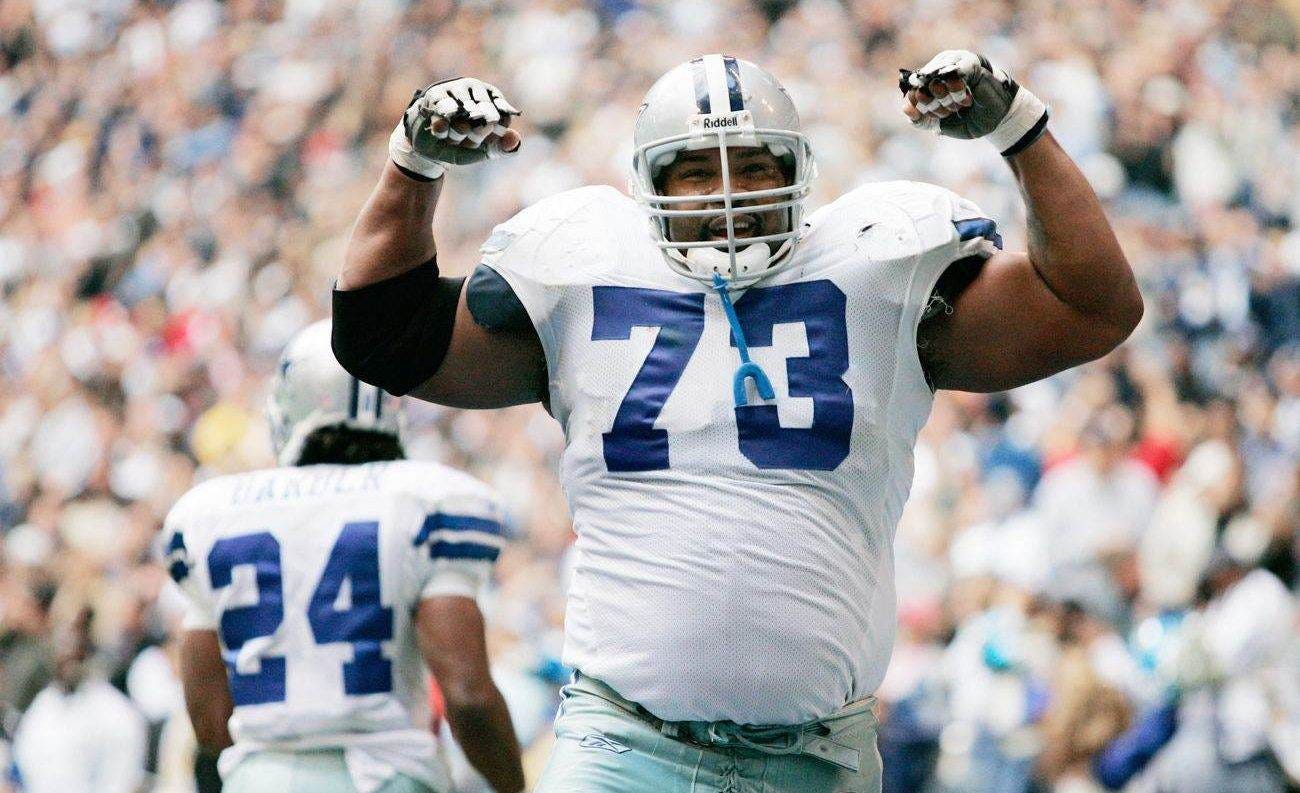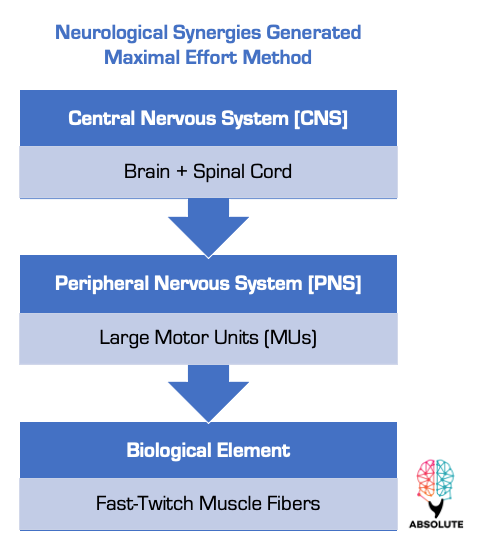Absolute Strength & Career Longevity
Identifying and acknowledging the link between absolute strength and the length of an athlete’s playing career.
At Absolute, we utilize real-life athlete injuries as feedback for us as performance practitioners to learn from. In the case of establishing a primary link between absolute strength and career length, we will do the same.
We are very confident in making this linkage, however it must be mentioned that to do so there are two caveats; the first is that we are required to know both the length of the athlete’s career - so the athlete in the example must firstly be retired, and secondly, we need to have a quantifiable measure of the load their nervous system was able to overcome in the training for absolute strength during their playing career.
With these in mind, we selected former NFL offensive lineman Larry Allen as the athlete example.
Larry Allen
Larry Allen was a former NFL offensive lineman whose career lasted 14 years (extremely long by NFL standards). Within those 14 years, Allen won one Super Bowl with the Dallas Cowboys and was selected to 11 Pro Bowls, 7 First-team All-Pro, and selected to both the 1990s and 2000s All-Decade teams. Simply, Allen physically dominated at the Level of Competition throughout his entire career with no drop-off at anytime.
Having a long career where the athlete physically dominates at the level of competition with no drop-off should be the main aim of every strength coach for the athletes they are responsible for.
Absolute Strength is an Enabling or Limiting Constraint on the Athlete
At Absolute, we believe that absolute strength plays a primary role in the length of the athletes playing career, even though this is something that has yet to be addressed, identified, or even openly discussed between strength practitioners. This belief in absolute strength as either: a primary enabling or limiting constraint on the athlete’s career length is a major reason for absolute strength being one of the fundamental physical capacities of Point B.
Simply when an optimal level of absolute strength is possessed by the athlete, we believe they are enabled to play at a higher level for sustained periods of time - thus, have longer careers.
The inverse relationship is also our belief. If the athlete does not possess absolute strength in accordance with Point B their career length is limited.
Absolute Strength is a Nervous System-Based Capacity
The distinguishing reason why we believe absolute strength functions as either a limiting or enabling constraint on the career length of athletes is a result of its relationship to the central nervous system.
To review, we at Absolute have defined absolute strength as:
“the readily available ability of the nervous system to generate an optimal magnitude of force that is efficiently propagated through the internal environment and sometimes discharged into the external environment.”
The distinguishing reason why we believe absolute strength functions as either a limiting or enabling constraint on the career length of athletes is a result of its relationship to the central nervous system.
Larry Allen’s Nervous System
Larry Allen’s nervous system enabled him to have a long career that resulted in him getting into the NFL Hall of Fame. It is evident that Allen's nervous system repeatedly learned about all of the large motor units that he possessed. Furthermore, Allen possessed the ability to consciously and voluntarily recruit those large motor units and muscle fast twitch muscle fibers they innervate to generate optimal magnitudes of force on game day, far above the level of his opponent. This allowed him to repeatedly generate asymmetrical magnitudes of force relative to his blocking target. The depth of this nervous system-based capacity was due to training for absolute strength, which he repeatedly and systematically did over the course of his career.
Load is Primary
Having never discussed training with Larry Allen (unfortunately), we cannot say exactly what his training regarding absolute strength was, but one thing we know with certainty due to the video below of him bench pressing 700 pounds: Larry understood load was critically important. Equally important to understand is that to acquire a 700lbs bench press, one must systematically train over time utilizing maximal loading, meaning Larry had to be systematically utilizing the maximal effort method in his training specifically for the bench press.
Why Load is Primary & Exercise Selection is Secondary
In the training for absolute strength, it is paramount to understand load as the primary constraint enabling acquisition. Subsequent exercise selection is secondary (although still relevant)
When seen on a continuum, the higher (maximal) the load, the more the training signals the central nervous system, whereas, the lower the load the more training signals the biological system. Therefore, load, when it is maximal, is the primary determinant that enables the nervous system the opportunity to: (1) search for, (2) find, (3) recruit, and (4) stimulate the motor units which innervate the muscle fibers from which force is generated to perform work.
This is precisely why Dr. Zatsiorsky1 states: “the muscles and central nervous system adapt only to the load placed on them.”
Note: there is no mention of exercise selection, only load. This is because load, more specifically, a maximal load, is what functions as the primary enabling constraint that trains the nervous system to output its maximal momentary effort.
In other words, the nervous system will only output its maximal momentary effort in the training scenario when it is working to overcome a maximal load - anything less than maximal is submaximal, and that load will only elicit a submaximal effort on behalf of the nervous system. As we have stated prior, submaximal training efforts (training at non-stimulating intensity) will lead to suboptimal training effects in the training to acquire absolute strength.
Exercise Selection is Still Important
We still have to acknowledge that exercise selection is important from the perspective of the individual athlete and their absolute strength outputs at the Level of Competition. Choose based on the demand at this level. Logic would tell us that for an athlete whose sport has a requirement of high levels of lower limb absolute strength, the exercise chosen would involve the lower limbs.
It is for this reason that the exercise Allen selected to progressively overload throughout his career was a bench press. That exercise, in conjunction with maximal load, enabled Allen’s nervous system to be cognitive of all the large motor units located within his upper body - so that he would use those synergies acquired via training to block his target.
Generating New Neurological Synergies
Synergy, as it relates to a pattern of encoding within the nervous system, was originally described by the famous neurophysiologist Nikolai Bernstein2.
Briefly, synergies result from the repetitive loop between afferent and efferent components and processes of the central nervous system that leads to the stereotypical patterns of movement we observe that are not actually that stereotypical. It is our opinion that training against a maximal load using the Maximal Effort Method is a training work cycle whereby the CNS is stimulated to go on a loop of searching for and finding the largest motor units and fastest muscle fibers, then synthesizing them in a coherent manner with the intent that overcomes or attempts to overcome a maximal load. Thus replicating the pattern of afferent and efferent flow that leads to a plethora of new neurological synergies as the CNS absorbs the training experience and continually learns how to stimulate and recruit the largest motor neurons to generate force. This is a major component of motor learning.
Keep in mind that the specific neurological adaptations that occur via maximal effort training are:
· Intermuscular Coordination
· Intramuscular Coordination
· Number Encoding
· Rate (Frequency) Encoding
· Pattern Encoding
· Facilitatory & Inhibition Reflex Processes
· Motor Learning
It is important to understand that specific training against a maximal load is the only mechanism by which the athlete can 1. acquire and 2. compound the most potent neurological synergies for force generation.
The generated neurological synergies from the Maximal Effort Method over time lead to accumulative compounding effects (Matthew effects) that close the Muscular Strength Deficit, leading to increases in maximal strength which leads to the nervous system capacity and one of the four fundamental physical capacities as defined by Absolute as absolute strength.
Larry Allen vs. 99% of Peers
Larry Allen is in the NFL Hall of Fame, and 99% of the peers he played with and against are not. After a couple of years, his career was very stable due to consistent, predictable performances of generating strength in a coherent manner that led to him blocking his target (i.e., Lineman Special Strength). Career longevity followed and emerged from these stable, consistent performances over time.
99% of Allen’s peers did not possess the nervous system-based capacity to generate the performances he was generating. They were of comparable height, weight, age, etc. but lacked the trained nervous system that enabled Larry Allen to attain high sporting mastery as an NFL lineman.
Larry Allen & Olin Kreutz - Both at Optimal Point B for the Football Lineman
The knowledge I have acquired in regard to optimal point B for the NFL lineman has, in large part, comes from directly working with another NFL great lineman, Olin Kreutz. Olin was the highest-paid center in the NFL for almost his entire playing career, a 6x Pro Bowler, on the 2000s NFL all-decade team with Allen, and named to the 100 greatest Chicago Bears of All-Time. Olin was part of the 1% with Larry Allen.
Olin has discussed and shared his training throughout his 14-year NFL career (same longevity as Allen). Unsurprisingly, he, like Allen, systematically and repeatedly trained against maximal loads throughout his entire playing career.
In working directly with Olin in the training of current NFL linemen to acquire absolute strength point B, the feedback we have received from other elite-level NFL linemen is they also systematically train their nervous system utilizing the Maximal Effort Method.
Career Longevity is a Part of the Feedback Loop of Athlete Management
As practitioners, we must be aware of the convergence that occurs from all the feedback we attain from working directly within the management and training of elite athletes is that ultimately should lead us to ensure the longevity of an athlete’s playing career. To do so, that athlete’s nervous system must be trained to Point B for absolute strength.
Unfortunately, as we have stated prior, this training of the nervous system seldom occurs at the level or frequency that is often necessary. Instead, we see athletes practicing and playing with their nervous systems but not training to build the neurological synergies and capacity required for career longevity - which is a prerequisite to attaining high sporting mastery, as we learned via Larry Allen and Olin Kreutz.
works cited
Zatsiorsky, V. M., Kraemer, W. J., & Fry, A. C. (2021). The Science and Practice of Strength Training. Champaign, IL: Human Kinetics.
Bernstein, N. A. (1967). The Coordination and Regulation of Movements. Pergamon Press.







